Google Adwords bidding is often the obvious choice for doing overseas marketing Google optimization. Today, Gogplay comes to focus on the placement of search network ads in Google Adwords. Teach you how to spend every penny of Google bidding is worth
First, the issue of opening an account
There are two ways to open an account in the Google Adwords tutorial, one is to open directly to individuals, the other is to find a Google advertising agency, the Google bidding hosted to a third party management.
There is no difference between the two ways to open the account, just find an agent to open a slightly higher price, but usually the agent will teach you some operational skills, so that you take fewer detours, and the account will help you deal with problems in a timely manner. Individuals open accounts, all the problems have to rely on their own, if the operation of experienced is also possible.

Google Bidding account structure.
Ad Account->Campaigns->Ad Groups->Ads and Keywords
An ad account can set up multiple ad campaigns, each ad campaign can set up multiple ad groups, and each ad group can set up multiple specific ads and keywords.
3、Bind Google Analytics
If the website has successfully installed GA code, then.
First, set Auto-tagging to YES (default is No) inside Google Adwords
Then, enter google Analytics, click “ADMIN” (Management) -> “Adwords Linking” on the left side in turn.

Just follow the instructions again.
After that, we can see in the “Traffic Acquisition” section of Google Analytics.
You can see the specific traffic analysis of Google Adwords, including the number of clicks, users, bounce rates, conversions, etc. for each ad campaign and ad group, even down to the analysis of each search term, as follows.
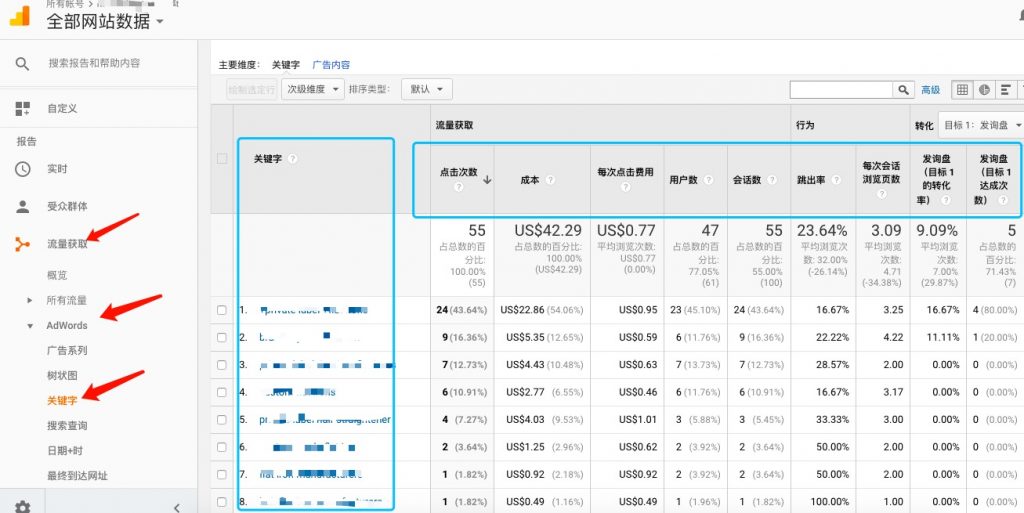
Which words bring better conversion, which words have low bounce rate, which words have less click cost, all at a glance, can help us better adjust and optimize the ads.
4、Set up the conversion tracking of Google Adwords
First, enter Google Adwords, click “Conversions” in the settings on the top right.
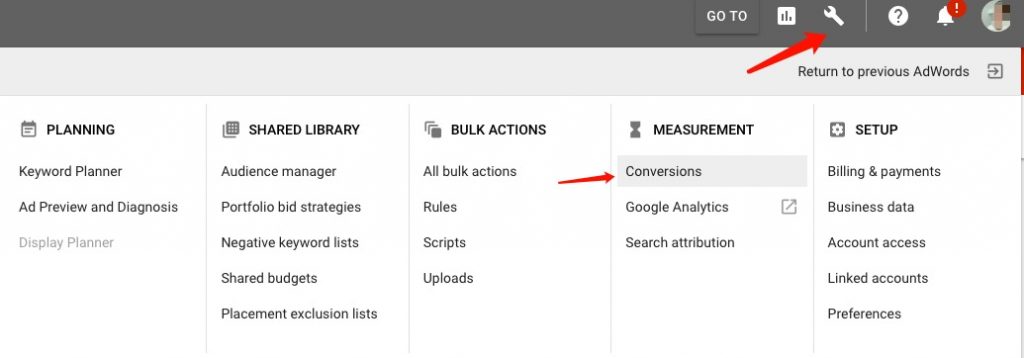
Click on the blue symbol + to set the specific actions for the conversion

First, select the type of tracking you want, the e-commerce type is generally selected as ‘Website’, that is, to track certain actions of users on the website
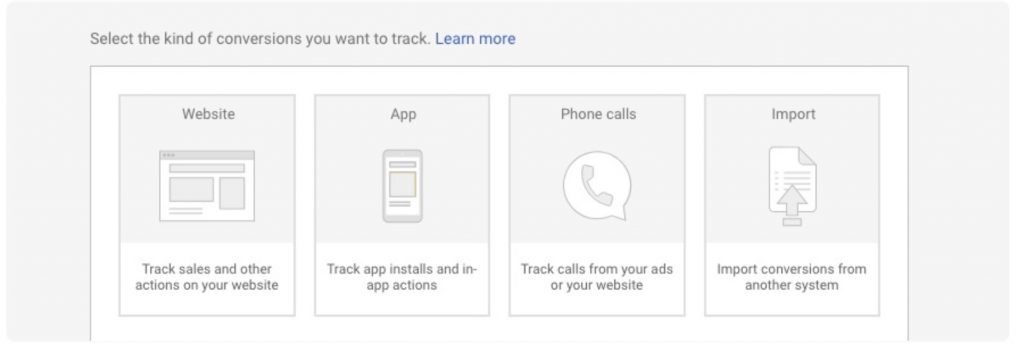
Then.
Give the conversion operation a name, such as “Submit form”, “Click Add to cart”.
Select the type of conversion operation, such as Purchase/Sale, Sign-up, etc..
Set a value for each conversion (depending on the price). If we are not selling online, but just directing customers to send inquiries, you can set the value to “Don’t use a value” without using a conversion value.
Set the calculation method for conversions. If you choose Every Count, multiple operations by the same user for a conversion will be counted cumulatively, and if you choose One count, multiple operations by the same user for a conversion will be recorded only once. In order to avoid duplication, Gogplay recommends that you set Count to One.
Then set the “Conversion window” (the time frame for tracking conversions), “view-through conversion window” (how long after the ad is displayed to (how long to track the view-through conversion window), “Include in Conversion” (whether to add the set conversion to the total conversion of Adwords) and “Attribution model”. .
Then, click “Create and Continue”.
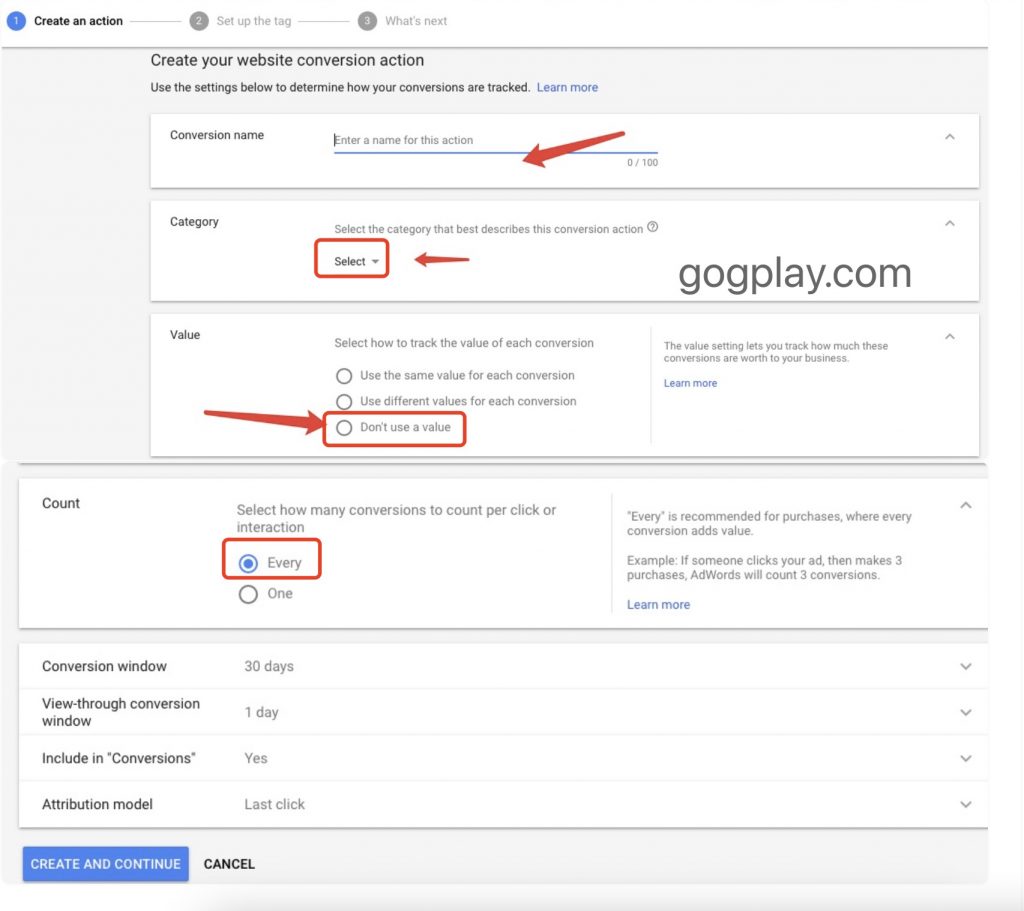
Install the conversion code correctly on the website. There are three methods to choose from, the third one is commonly used by Gogplay. After installing the code, click Done and you’re done.

The types of Google Adwords ads and the process of placing them are explained in detail
Google Adwords can place five types of ads, namely: Search, Display, Shopping, Video and Universal app.
Search ads: i.e. ads that are displayed only when someone searches for certain keywords, the corresponding text ads will appear in the user’s search results (can be set to Google search engine only or also include Google’s partners).
This works by matching the user’s search term or phrase with the keywords set in the ad, and the ads that match and are of higher quality may be displayed in the user’s search results. For example, if you sell trucks, you can add “purchase truck” as a keyword in your AdWords campaign. When a user types “purchase truck” into Google search, your ad may appear on the search results page.
In addition, when setting up search ads, you can also choose to add display ads at the same time to expand your reach.
Display ads: This means that ads are displayed to specific groups or websites targeted by the advertiser, allowing ads to appear on numerous websites, mobile apps and video content. (Google display ad network includes 2 million websites, covering more than 90% of the world’s Internet users). Display ads can be set up with adaptive ads, image ads, interactive ads, Gmail ads, etc.
- The placeholder can target display ads by specific audience groups, such as users who have visited the website before, users who have added products to their shopping cart but have not ordered, users who may be interested in buying specific products, users with distinct audience characteristics (e.g. young mothers), etc.
- The placeholder can target the content so that the ad is displayed on a page or website with a specific category of content. For example, an ad selling yoga socks could be targeted to appear on a yoga blog.
Shopping ads: Ads containing product photos, names, prices, store names, etc. are displayed in the user’s search results. As the following figure.
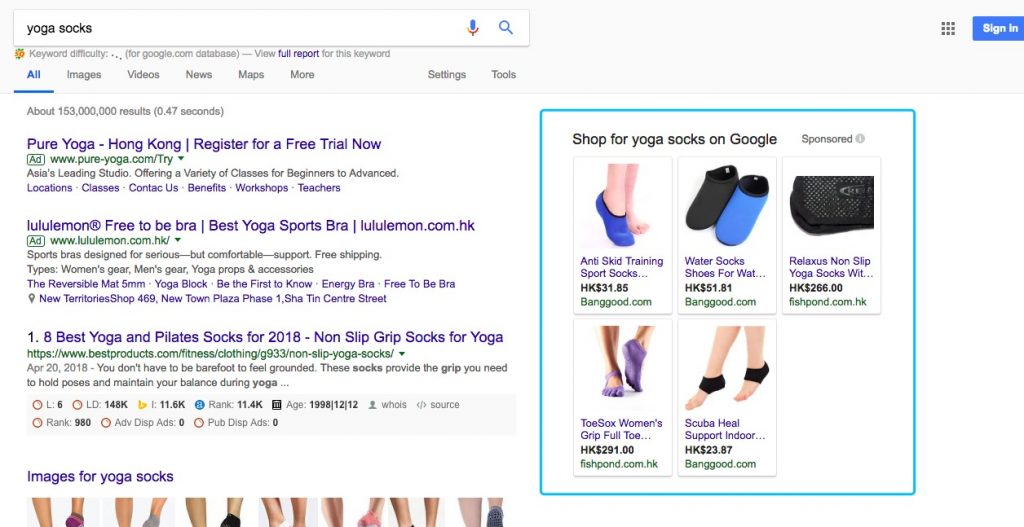
Unlike the previous types of ads, the placement of this ad requires the placeholder to set up a Google Merchant Center account and bind it to a Google AdWords account. The official steps are as follows: https://support.google.com/merchants/answer/2660968.
Video ads: i.e. ads that can display videos on YouTube or the entire Google Display Ads network. There are three types of video ads: TrueView in-stream ads, TrueView video discovery ads and bumper ads.
TrueView in-stream ads: i.e. interstitial ads that can be placed before, during or after other YouTube videos are played, on websites, games or apps across the Display Ads Network, or in YouTube videos embedded into other websites. Viewers have the option to skip the ad after 5 seconds of video playback.
TrueView video discovery ads: These ads can only be placed within YouTube. When the user clicks on the thumbnail of the ad, the video will be played on the YouTube or channel homepage. The appearance of this ad may vary depending on the ad size and ad format supported by the specific video.
bumper ads: is a short video ad format that can be used to attract customers and increase brand awareness. These ads are 6 seconds or less in length and the viewer does not have the option to skip the ad. Official details of the placement process: https://support.google.com/adwords/answer/2375497
App ads: These ads are mainly used to promote the app and attract users to download and use it. Unlike other ads, this ad does not require the user to set up a specific ad, just provide some text, set the starting bid and budget, position the language and geographic location, and then the system will test different combinations of ads and choose the ad with good results and place it frequently. The display locations of application ads include: Google Search, Google Play, YouTube and Google display network. The official specific placement process: https://support.google.com/adwords/answer/6291545.
As our foreign trade company is commonly used in search advertising, so next, we explain in detail the process of search advertising.
Enter Google Adwords.
1、Set up the ad series
Click to add “Ad Series” -> select “Search” ad series type -> set the target of the ad series -> add the site. Then click CONTINUE.


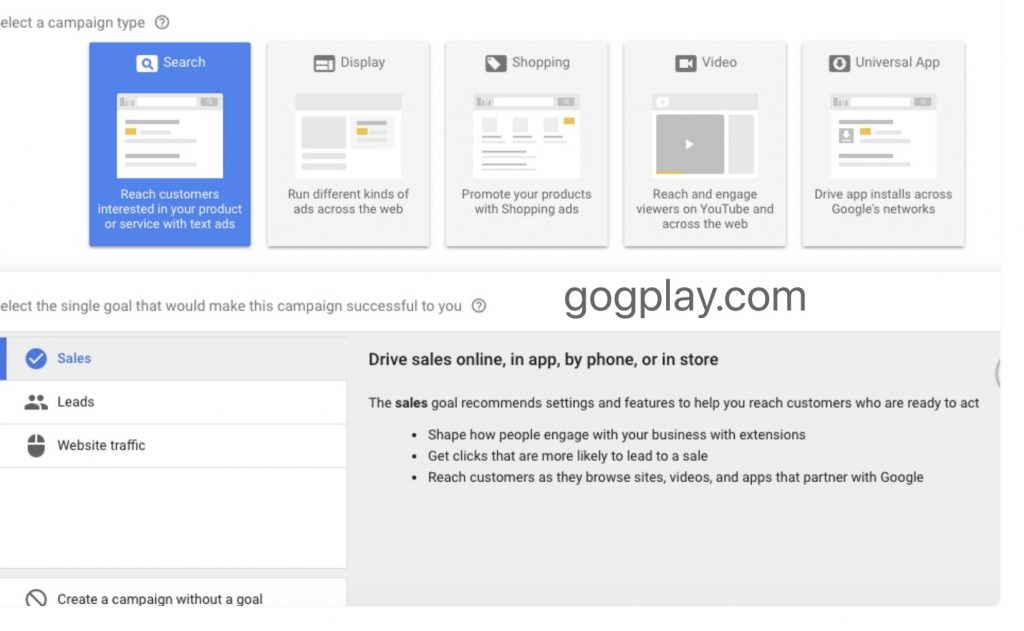
Next, set up the name of the Google campaign, placement location, target language, daily budget, expiration date, additional links at the campaign level, promotional messages, phone information, etc.
2、Set up Google Ad Group
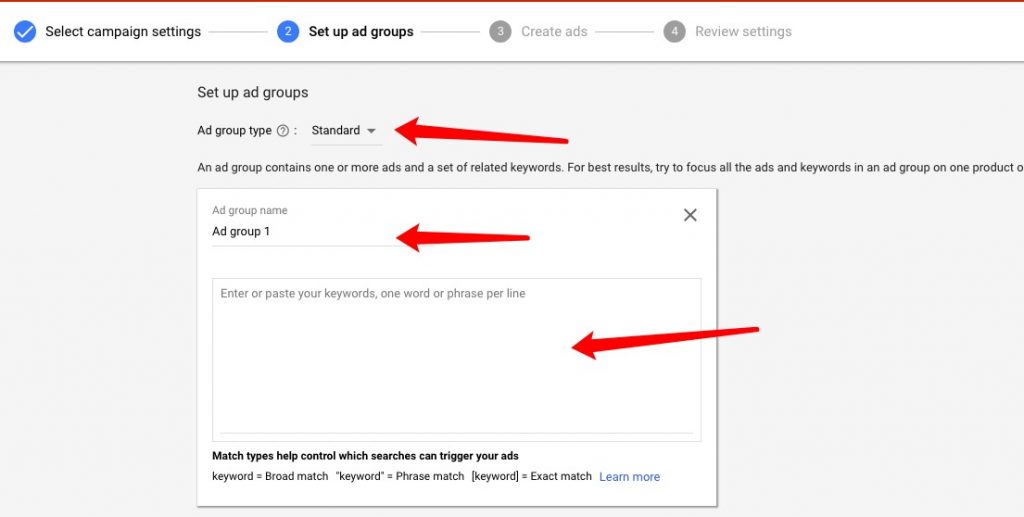
As shown above, select the ad group type (standard or dynamic), set the ad group name, and add the keywords to trigger the ad in turn. Then just click Save and Continue.
[For the keyword match type, Gogplay highlights the following.
Google adwords keyword match types are as follows.
①broad match: i.e. keywords without any symbols, such as purchase truck.
For broad match keywords, the display of ads can be triggered when the user’s search term contains a misspelled form of the keyword, synonyms, related search words or other related variants. In this example, ads may be triggered when users search for how to purchase truck, purchase truck website, purchase cheap truck.
②phrase match: i.e. keywords in double quotation marks, such as “purchase truck”.
For phrase match keywords, if the search term used by the user matches the phrase, or is a close variation of the phrase, or if other words are added before or after the phrase, the ad can be triggered. However, if other words are inserted between the phrases, or if the words in the phrase are in a different order, the ad will not be displayed. In this example, if you search purchase truck online, where to purchase truck in China, the ad will be displayed, but if you search purchase high quality truck, truck purchase, the ad will not be displayed.
③exact match: i.e. the keywords in square brackets, such as [purchase truck].
For an exact match keyword, the ad may be triggered to display only if the user’s search term matches the keyword exactly, or if the search term is a close variant form of the keyword (for example, only the addition or deletion of prepositions, conjunctions and other words that do not affect the search intent or keywords whose word order has changed).
For this example, the search terms truck purchase, purchase a truck, and truck for purchase all trigger the display of the ad.
④Keywords using the broad match modifier (Note: there is no space between the + and the word.)
The broad match modifier (broad match modifier), i.e. the plus sign +, is used to modify broad match keywords. Ads can be triggered to show when the search content is a close variant of such keywords (without synonyms) or a combination of them in any order. For example, for the keyword +purchase +truck, when a user searches for truck purchase, purchase cheap trucks, or truck purchasing, the corresponding ad is triggered to show, but not for the synonym buy truck.
(Compared with broad match keywords, it can have more control; compared with phrase match keywords, it is more free and flexible.)
⑤ Negative match
Negative match means you don’t want it to trigger the keywords of the ad. For example, if you are a hat company, but you don’t sell baseball hats, you can add “-baseball hats” as a negative match keyword to the ad group or ad campaign, when users search for baseball hats, your ad will not be triggered to show up. Another example, if you export trucks, but you don’t want to sell cheap ones and want to jam the word cheap, then you can add cheap as a negative keyword and set it as a broad match, later when users search for any truck related words with cheap, your ads will not be shown.
Note that.
1) Most advertisers find it more appropriate to use 5 to 20 keywords per ad group.
2) Keywords are not case-sensitive, which means they match without regard to upper or lower case letters.
3) Symbols have a special meaning in AdWords, so keywords cannot contain any non-standard characters, such as: ! @%, *
4) The match type of these words can be changed at any time]
3、Set up ads

A. First, fill in the Final URL with the correct URL of the ad landing page, that is, the page you want to jump to when you click the ad.
B. Then, fill in the Path text in the Path1 and Path2 part of the Display path. note that the path text here is mainly used to describe the product or service of the ad landing page in detail, so that users can clearly understand the main content of the target page before clicking the ad. For example, you are a website XXX.com that sells shoes, and you want to place an ad for outdoor men’s shoes, then you can set this as www.XXX.com/Mens_Shoes/Outdoor.
C. Next, fill in the specific ads at Heading 1, Heading 2 and Description.
Notes for filling in the advertising slogan.
(1) Pay attention to the word limit and accurately describe the product or service of the landing page
2) No other brand words and no exclamation points
3) Use professional language to create a sense of trust among users.
4)Study the psychology of users, put yourself in their shoes and tell the information that interests them or is beneficial to them
5)Discount and discount information can appear in the advertisement, and if there are figures, use them as much as possible;
6)Put up service cases and authoritative proof to show your experience and authority, as well as trustworthiness.
7) Appropriate use of call-to-action language
8)Important point: In order to improve the quality score of the ad and the relevance of the ad, both the tagline and the ad landing page should contain the keywords set in the ad as much as possible!
D. Add additional information to the ad.

Your ads can be extended with additional ad information to provide users with more reasons to choose you and increase click-through rates. The format of additional information includes call buttons, location information, links to specific parts of the site, and additional text. You can add and use them as you see fit.
Note: When you choose to add an additional link, you will be asked to choose the level, i.e. set whether this additional link is at the account level, the campaign level, or the ad group level. For account level additional information, it will be effective for all ads under the account; for ad series level, it will be effective only for ads of all ad groups under this ad series; for ad group additional information, it will be effective only for ads of this specific ad group.
In addition, due to the different search devices of users, the display of additional links will be different, and the additional links that may be displayed on the computer side will not be displayed on the cell phone side].
E. It is recommended to set at least three different ads for each ad group, and select “Optimize: Select better ads” in the ad rotation settings.
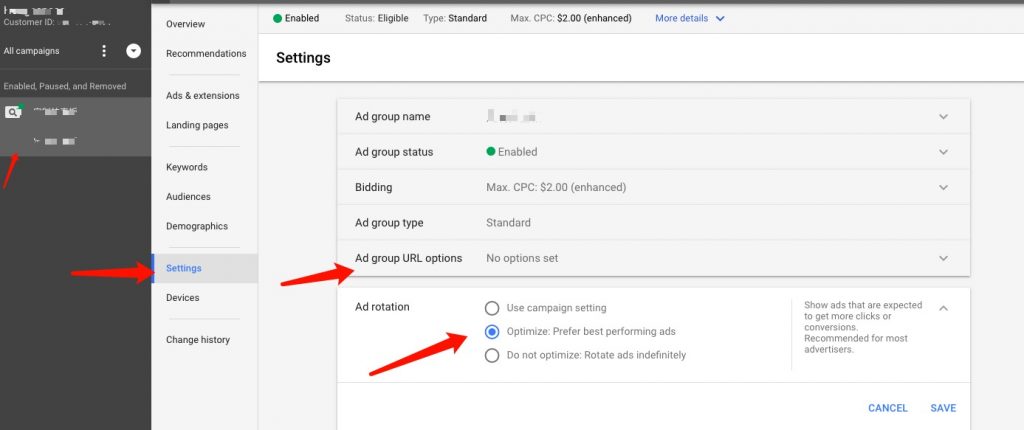
F. After setting the new ad settings, Google Adwords needs to review them, and after the review is passed, the ad status will change from “Under review” to “Approved”.

4、Optimize the advertisement
After the ads are placed, they need to be monitored and optimized in real time.
Optimization of keywords: click “SEARCH TERMS” to check the search terms used by users to click on the ads, and add the imprecise words to the negative keywords or adjust the matching type of existing keywords; for the precise new words, you can choose to expand them to the existing keyword list.
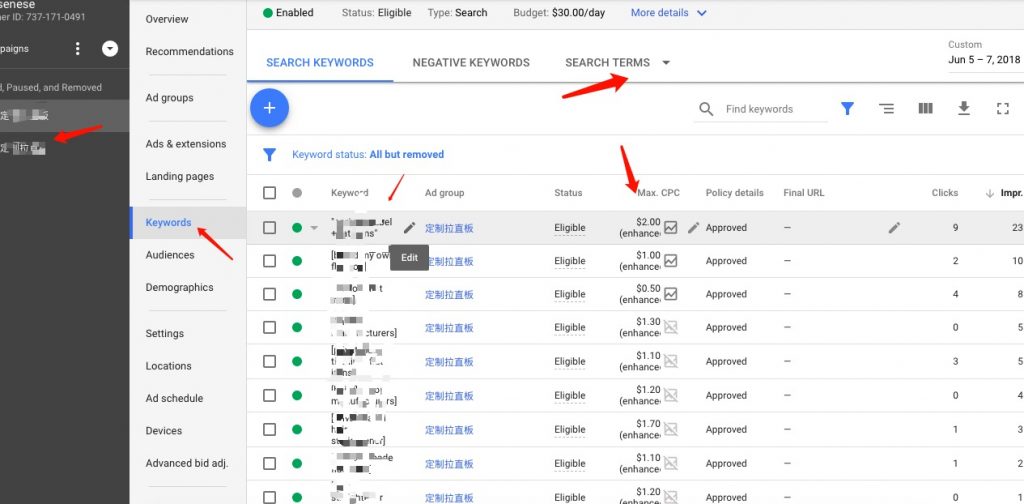
For the quality score (Quality Score) is not high keywords, you can first look at its bounce rate in GA, the bounce rate is high, it is likely that the word is not accurate, well also look at the first four results of Google search, if not corresponding to our products, then the word can be stopped. If it is a precise word, then you can adjust the adwords and ad landing page to improve relevance, thereby increasing the quality score (must be more than 5 points).
For the keywords with high bounce rate and short stay time on the page, basically the word does not correspond to the content expected by the user, you can choose to suspend or delete. And so on.
Optimization of banners: Check which ad of this ad group has a higher exposure rate, click rate and conversion rate, so that the ad is basically successful. Other ads can be optimized according to its success point. Of course, you can also optimize according to the recommendations given by Google Adwords itself.
Optimization of Google Adwords landing page: If the words are very accurate and the ad click rate is good, but the conversion is not high, and the bounce rate and dwell time data given by GA are not satisfactory, it is likely that there is something wrong with the landing page. You can grab the user’s pain points for in-depth optimization; you can take the essence of competitors’ landing pages; you can do some AB tests, etc., to make the landing page more relevant to the ads and more in line with the users’ psychological expectations.
Well, this article ends here, if you want to know more about Google business, please bookmark our website and read it on your own, currently we support Chinese, English, Japanese, Arabic, Spanish
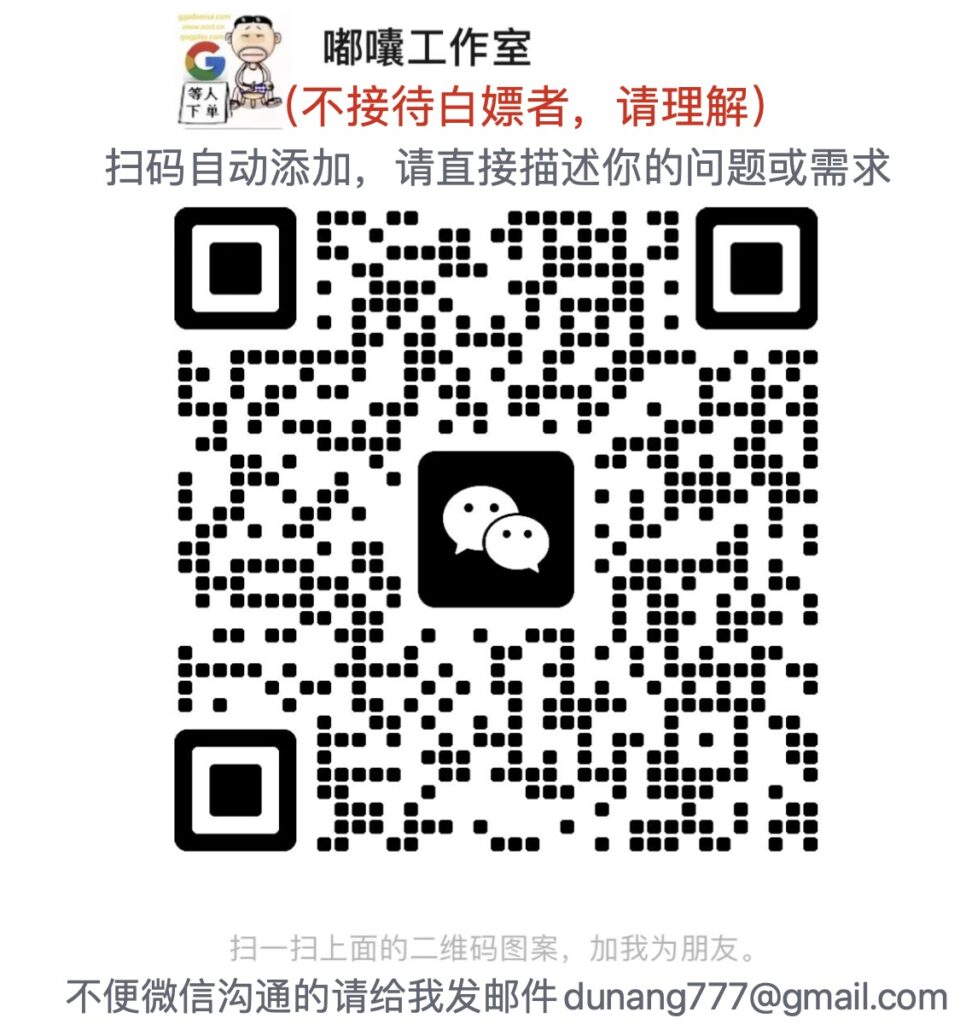
Comments0